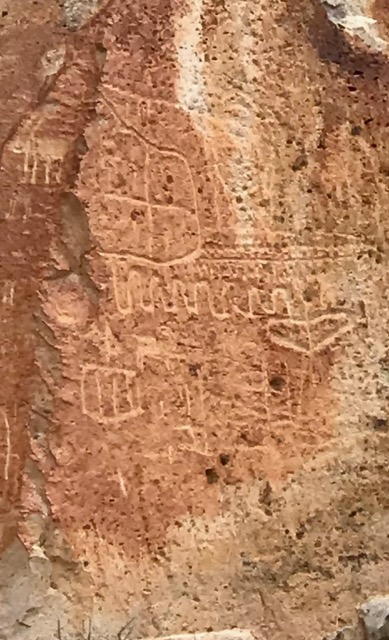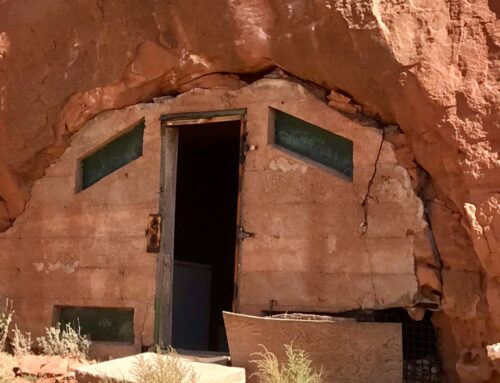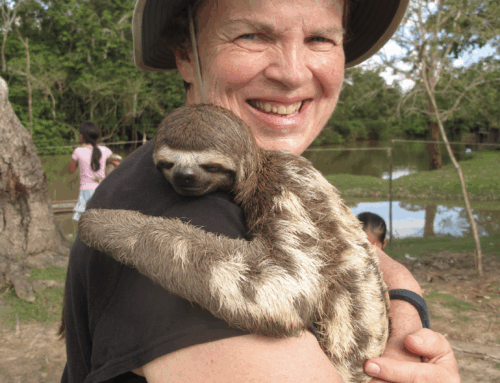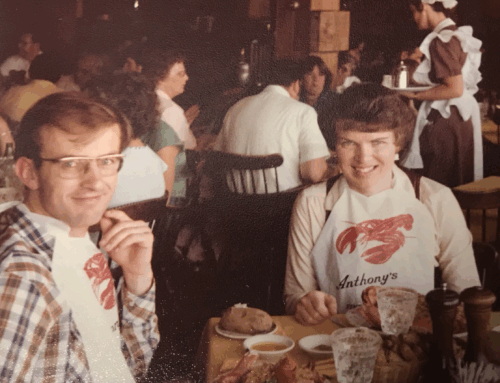Returning to the Land of Ancient Stories
Utah has always felt like home to me. I grew up in the canyonlands, riding in my father’s green Forest Service truck, watching the red rock cliffs rise like silent cathedrals. As a little girl, I didn’t yet understand that these canyons held the stories of people who lived here thousands of years before I was born. But as I’ve grown older—and traveled the world—these ancient markings have taken on a deeper meaning for me. They are reminders that humans have always reached for connection, understanding, and expression.
This week, I returned to some of the rock art that has shaped my love of this land. These aren’t just pictures; they are messages from people whose names we do not know, but whose voices still echo across time.
Cowboy Caves of the Redd Family: A Glimpse into Utah’s Ranching Past
Handprints: The First Hello
The first panel I visited was a breathtaking wall of handprints. Some are crisp, others faded, and one has a white patch where time or erosion has touched it. These impressions—made by pressing painted hands against rock—are among the oldest forms of human expression anywhere in the world.
A handprint is simple and profound at the same time.
It says, I was here. I belonged to this place. I leave this mark so you will know me.
Standing there, I felt like I was shaking hands with history.

Barrier Canyon Style: The Ghostly Ancients
Next came the tall, ethereal figures painted in red pigment on smooth canyon walls. These haunting shapes belong to the Barrier Canyon Style, created by the Archaic people two to four thousand years ago.
Their bodies are elongated, their arms raised in gestures that might have meant celebration, prayer, or communication. We don’t know. The mystery is part of their magic.
What strikes me most is how alive they feel. Their presence is undeniable, and the canyon seems to guard them like sacred beings.
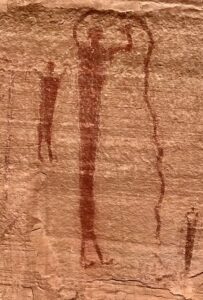
Ancient Carvings: Geometry and Symbol
In another panel, the pictographs shift from paint to stone carvings—sharp geometric lines and simple shapes etched directly into the rock. This transition marks a different time and perhaps even different cultures, possibly Fremont or Ancestral Puebloan.
There is a wheel-like shape, a heart, a rectangle that might represent a home or enclosure. These markings feel more personal, more daily-life oriented. They remind me that ancient people weren’t only spiritual—they were farmers, hunters, families, craftspeople.
They lived full lives, just as we do.
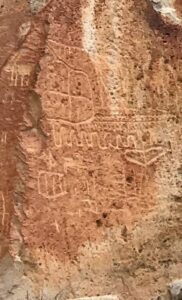
Newspaper Rock: A Living Petroglyph Library
And finally, the grand masterpiece: Newspaper Rock.
This immense black rock face holds hundreds of petroglyphs from dozens of time periods. Bighorn sheep leap across the panel, riders on horseback appear beside bear tracks, human figures stretch their arms to the sky. Some carvings may be over two thousand years old, while others were created in the 1800s by Ute or Navajo artists.
It’s a visual timeline—a conversation across centuries.
I love the name “Newspaper Rock,” because that’s exactly what it feels like: a community bulletin board, a storytelling wall, a place where generations came to record pieces of their lives. When you stand in front of it, you can almost feel the energy of all the people who stood there before you—carving a message about who they were, what they hunted, what they believed, or who they loved.
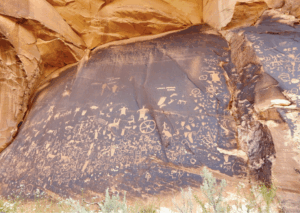
A Deeply Personal Homecoming
Being back among these ancient voices feels like coming home. My father introduced me to this land long before I had the words to describe its importance. Now, as a photographer and a storyteller, I can capture and share these moments in a way that honors both the land and the people who lived here long before modern maps existed.
These rock panels are more than art—they are bridges.
They connect the past to the present.
They remind me that every life leaves a trace.
And I’m grateful for every chance I have to stand in front of them, camera in hand, heart wide open.



